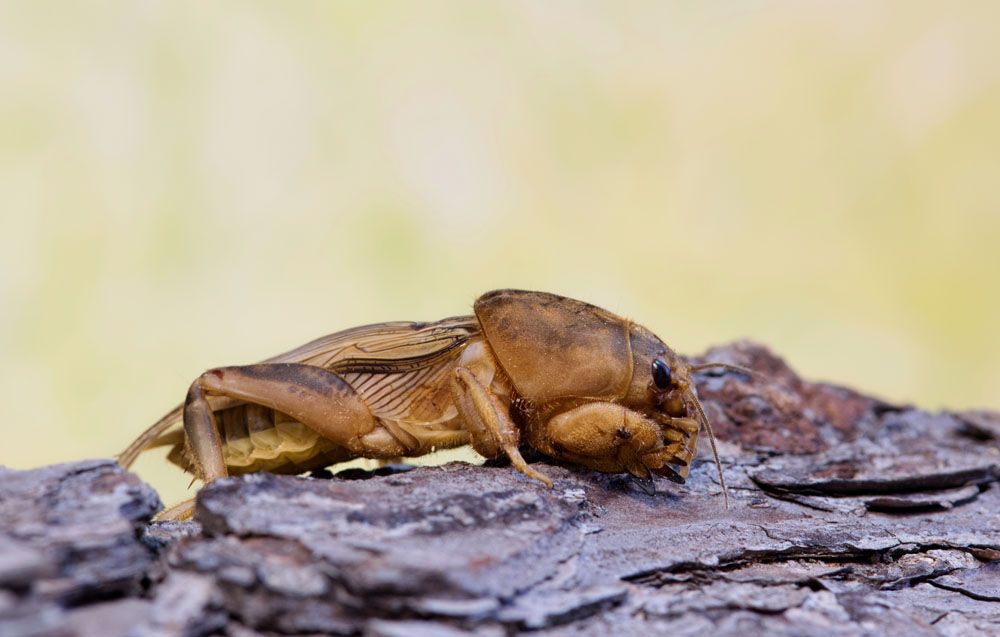
Tawny Mole Cricket – Scapteriscus vicinus
Tawny Mole Cricket (Scapteriscus vicinus)
Common Name: Tawny Mole Cricket
Latin Name: Scapteriscus vicinus
Appearance:
Eggs:
The eggs are oval to bean-shaped and measure around 3 mm in length and 1.7 mm in width when they are first laid. As the eggs absorb water, they grow in size, reaching a length of 3.9 mm and a width of 2.8 mm. Although total fecundity is unknown, a single female has produced more than 100 eggs.
Nymphs:
Hatchlings are pale at first but darken quickly and dig to the soil surface within 24 hours. Nymphs and adults build large underground tunnel networks, normally found in the top 20 to 25 cm of soil. They feed on the surface in the evenings, generally emerging after nightfall if the weather is good.
Adults:
On the forelegs of adult male mole crickets are enormous blade-like projections known as dactyls. Females lack an ovipositor and make a courting song that females find appealing. Mating occurs in the male’s burrow, following which the female may take over the burrow. The male mole cricket, except the shortwinged mole cricket, enlarges the entrance to his burrow in preparation for calling.
Territory:
The tawny mole cricket burrows through the sandy soil, generating galleries, which are normally found in the upper 25 cm (10 in), with the depth varying depending on the temperature and moisture content of the soil. This species is endemic to South America, although it may also be found in the United States’ southern states.
Damages caused by Tawny Mole Cricket:
The tawny mole cricket is a serious pest of seedlings, turf, and grazing grasses. Tawny mole crickets eat mostly plant matter, with a little number of insects and other animals. Seedlings are commonly damaged by crickets, which feed aboveground on foliage or stem tissue and belowground on roots and tubers. Plant stems are frequently girdled at the soil surface, while immature plants are occasionally destroyed and dragged belowground to be devoured. Small plants are also harmed by soil surface tunneling, which can dislodge seedlings or cause them to dry out. Compared to tawny mole cricket, southern mole cricket causes greater tunneling harm.
Life history and habits:
Underground chambers are where eggs are placed. If an adult female survives long enough, she can deposit many clutches of eggs. Typically, each clutch includes 24 to 60 eggs. Initially, nymphs are cannibalistic. They emerge from the egg chamber and start eating plant roots. During the summer, they eat and develop, molting six or seven times. The next spring, these overwintering mole crickets reproduce. Adult tawny mole crickets are most visible during their springtime migrations. Flights of tawny mole crickets begin just after nightfall and last for less than an hour. Other species’ life cycles are compared to the tawny mole cricket’s in this tutorial since it has a unique life cycle.
